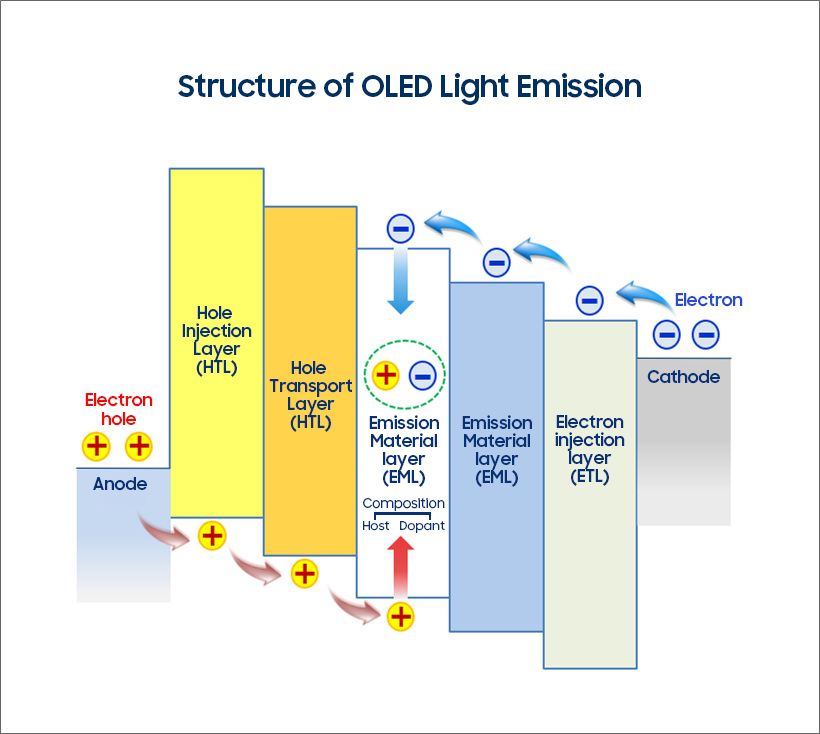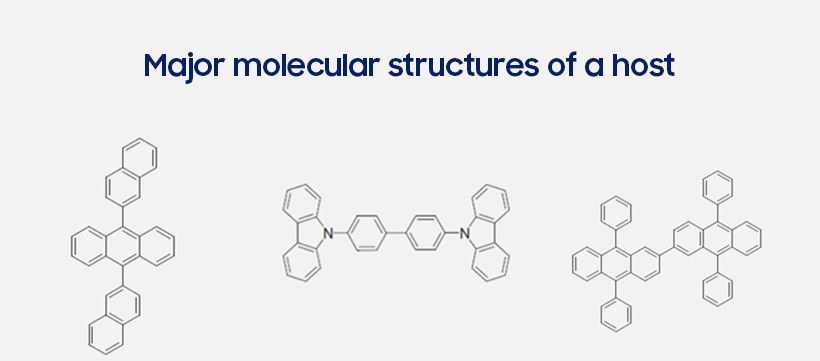
A host refers to a component in the emission material layer (EML) within an OLED panel that emits light.

The charge carriers – electrons (negative charge) and holes (positive charge) – are obtained at the cathode and anode on the OLED panel; once they reach the emission material layer (EML), they mingle into a pair and create excitons*. Once excitons’ high energy level s to a lower energy level and stabilizes, that energy gap is released in the form of light. Hosts in the EML facilitate electron-hole pairing, which enables efficient formation of excitons.

A host consists of organic materials such as anthracene and is usually paired with a dopant, which increases luminous efficacy. Instead of a single organic material often used in the early development of OLED displays, the host-dopant emission system is used widely today due to its high levels of color purity and luminous efficacy



